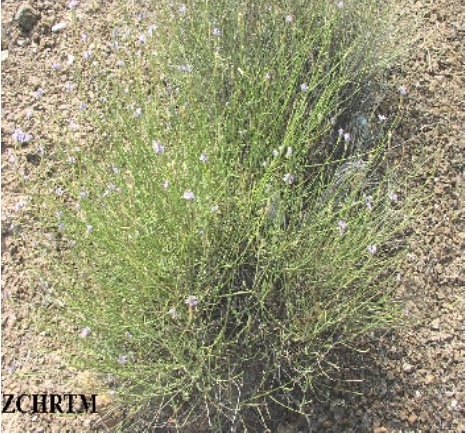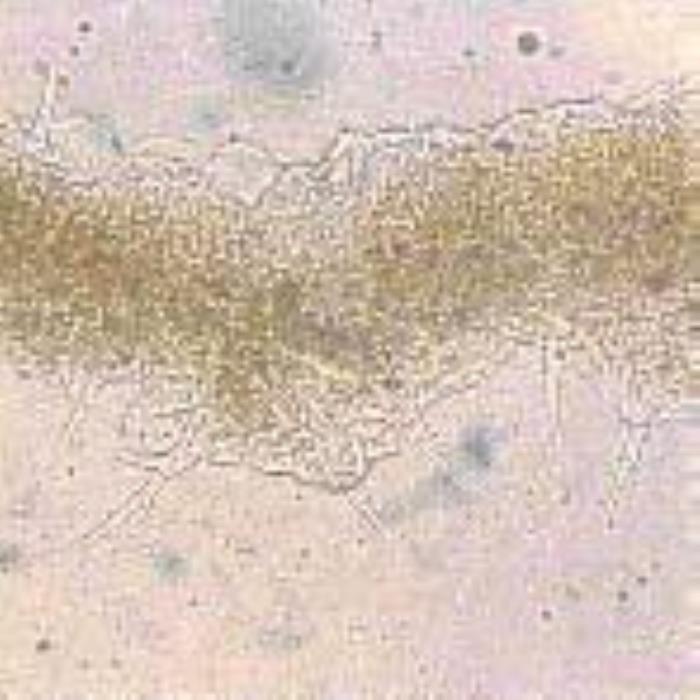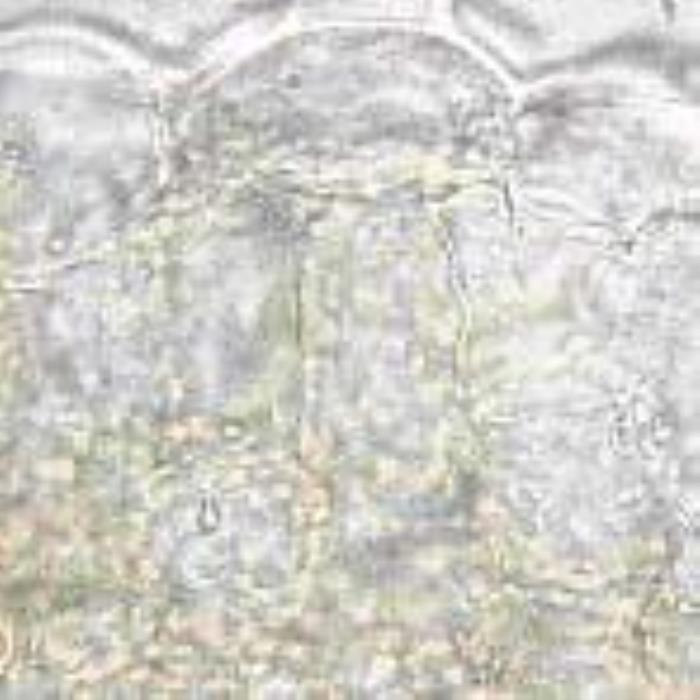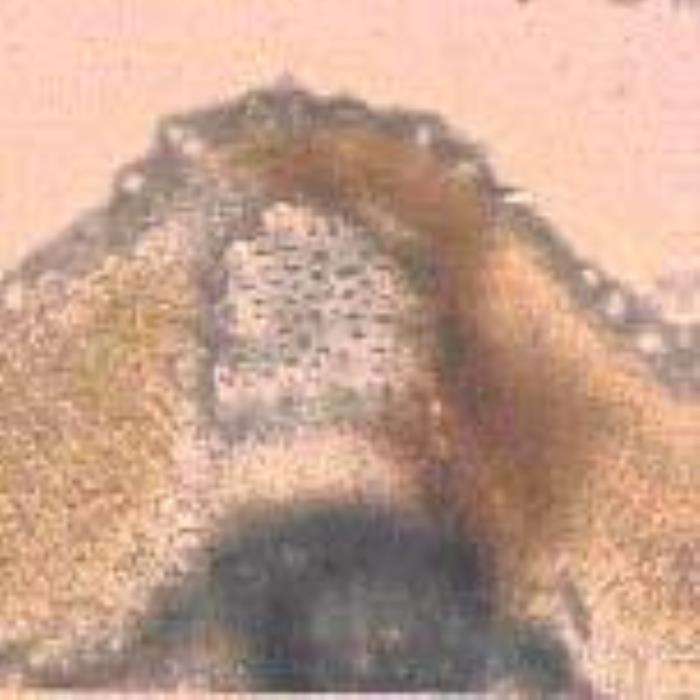
Lavandula subnuda /مغزغاز
Shokaa, Shokai, Showika, Aataf, Aaqol, Shokah Baidaa, Janab Shokai
Lavander
Meigzgaz, Gizgaz
Lamiaceae

Flowers

Herbarium Sample
Ethnobotanical Characteristics
Description
Perennial herb, woody base, stems angular, green & erect ,up to 120 cm, much branched. Leaves sparse, opposite. Lower leaves narrow to 4cm, with 2-5 deeply serrated and pointed lobes; almost leafless except young plants which display vigorous basal growth. Inflorescence spike, terminal, bracts ovate with a spinescent tip, flowers inconspicuous on elongated leafless spikes, aromatic, bluish white or lilac. Fruit small nut with a red winged persisting perianth.
Habitat & Distribution
Widespread, from the Mediterranean to India, all species very common in Europe. The plant is widespread especially in Arabia, North Africa. In UAE it is found in rocky habitats, in hillsides and wadi-banks.
Part(s) used
Aerial & flowering parts and oil obtained from floral tips.
Properties & Medical Uses
The lavenders are known in medicine from the earliest times used to treat chest and throat problems, and epilepsy. Generally the plant known as antidote, cooling agent, antispasmodic, stimulant, tonic and insect repellent. In UAE: Decoction of aerial parts of L. subnuda taken single or mixed with other herbs used for gastrointestinal problems, fumigated to treat rheumatic pains and inhaled for sinusitis (smoke or steam).
General Uses of Lavandula spp.
Traditionally infusion or steam inhalation used for coughs and colds, kidney diseases; has sedative properties and good for calming anxiety and tension, antispasmodic, diuretic, vermifuge, antiseptic; oil for massage for muscles, neuralgia and rheumatic pains; strong infusion used as douche for leucoderma; in veterinary used for lice and parasites.
Pharmacognosy and Phytochemistry
Parts studied
Leaves and branches
Microscopical Description
Leaf: In a surface view, the upper epidermis consists of large polygonal cells with thin straight cell walls while the lower epidermis consists of large cells with highly undulating cell walls. A transverse section (TS) of the leaf shows a unilateral character. The upper epidermis consists of parenchyma cells with markedly variable sizes covered by a thin faintly striated cuticle. The underlying hypodermis consists of one layer of large oblong light brown cells with irregularly thickened walls. They contain small amorphous masses. There is no definite palisade layer. The mesophyll spongy cells are slightly polygonal or spherical. Some cells contain single or two rosettes of calcium oxalate crystals. The spongy cells are traversed by vascular bundles with spirally thickened vessels. Branched covering trichomes mainly consisting of two trichomes with one or two basal cells are distributed on both epidermises but they are denser at the lower one; the upper epidermis mainly bears simple conical covering trichomes. The stomata are oval and are of the diacytic type and they are distributed on both epidermises but they are more on the lower one.
Branches: A transverse section of a branch shows a square outline. The epidermal cells are small and rectangular with thick cell walls covered with a thick cuticle. The epidermis is encircling about 2-3 layers of narrow longitudinal cortical cells followed by a layer or two of relatively broader longitudinal cells towards the center. The endodermis consists of small spherical cells enclosing the pith which consists of large compactly packed polygonal or spherical cells with a slightly thick cuticle. The vascular tissues are found at the corners occupying large areas being separated from the epidermis by few layers of collapsed cortical cells light brown in colour. The vessels are spirally thickened (DPS ZCHRTM un pub results).

a) TS of leaf

b) Upper epidermal cells

c) TS of branch
- (a). TS of the leaf showing the upper and lower epidermises bearing covering trichomes with the dark areas consisting of palisade and spongy mesophyll.
- (b). Oblong to oval or rounded upper epidermal cells (one is papillose) underlain by palisade cells followed by spongy mesophyll cells.
- (c). TS of the square-shaped branch at one corner showing the epidermis, collapsed orange-brown cortical cells, phloem tissues, xylem tissues and pith (dark-coloured). (Magnifications: x 100, x 400 and x 100, respectively).
Organoleptic characteristics
Appearance: Solid powder
Colour: Light brown
Odour: No specific Smell
Taste: Tasteless
Physicochemical constants
Loss in weight on drying at 105°C (%): 9.00-9.20
Solubilities ( % )
Alcohol solubility: 3.20-4.00
Water solubility: 14.40
10% ethanolic extractive: 21.60-22.00
Ash values (%)
Total ash: 5.00
Water soluble ash: 2.00-2.20
Acid-insoluble ash: Nil
Successive extractive (%)
Petroleum ether (60-80°c): 1.30
Chloroform: 2.50
Absolute alcohol: 4.5-4.90
Distilled water: 14.20-14.40
pH values
pH of 1% solution: 5.86-5.88
pH of 10% solution: 5.83-5.84
The above results are under process of Publication( DPS ZCHRTM un pub. res.)
Chemical constituents
Volatile oil (1-3%): chief components (-)linalool (40%) and linalyl acetate (35%), terpenene-4-ol, -caryophyllene. Hydroxy coumarins, umbelliferone, herniann, tannins, caffeic acid derivatives: including among others, rosmaric acid. (DPS, ZCHRTM un pub. results; Wagner 1996).
Pharmacological and Toxicological studies
This study indicates that aromatherapy with Lavandula does not reduce combative, resistive behaviors in individuals with dementia (Grey and Clair, 2002). These results are encouraging and suggest further investigations using potential patients for the development of a useful procedure for improving psychological well-being following Lavandula (Morris, 2002).The pharmacological and toxicological studies carried out in our laboratory and the results in brief, on Lavandula subnuda (10% ethanolic extract) have been given below. The results presented without references showed unpublished data (UPD, ZCHRTM, DBMS):
|
ACTIVITY |
RESULTS |
|
Anti-inflammatory activity-Rat paw oedema |
Did not show anti-inflammatory activity. |
|
Antinociceptive activity-Tail flick |
Did not show analgesic activity. |
|
Antinociceptive activity-Writhing |
No. of writhing were found reduced at 10-15 min. |
|
Anti-hypertension activity-Anesthetic rats |
No changes was observed at lower dose; an increase in BP, HR. at higher dose was recorded. |
|
Vasorelaxant activity-Isolated aortic strip |
No relaxation in contracted strip. |
|
Locomotor activity |
Reduced locomotor activity. |
|
Cardio tonic activity & HR -Isolated rat atria |
Showed an creased in force of contraction. |
|
Effect on Sleeping time induced by pentobarbitone |
No effect was observed. |
|
Effect on GIT smooth Muscle-Isolated guinea pig ileum |
No significant change in resting tension. |
|
Effect on GIT smooth Muscle-Isolated rabbit jejunum |
Reduced amplitude of contraction. |
|
Anti-epileptic activity (anti convulsion activity) |
No anti-convulsion activity was reported. |
|
Gross behavioral studies-Tremor/Twitches |
Orally not toxic, i.p. toxic effects were observed. |
|
Gross behavioral studies-Writhing |
Orally not toxic, i.p. toxic effects were observed. |
|
Gross behavioral studies-Diarrhea, Urination |
Orally not toxic, i.p. toxic effects were observed. |
|
Mortality |
Death reported when administered i.p. |
|
Motor co-ordination (String &Platform test) |
Not affected by oral, but affected by i.p. administration. |
|
Anti-asthmatic activity-Guinea pig Tracheal chain |
Did not produce relaxation in histamine contracted chain. |
|
Acute toxicity studies |
No toxic signs and symptoms observed(administered orally), showed mild toxicity(administered i.p.). |
|
LD50 evaluation (Oral) |
No toxicity reported administered orally. |
|
LD50 evaluation (i.p.) |
20% animals died at the dose of 800 mg/kg. |
Summary of the results
Lavandula failed to show anti-inflammatory activity, analgesic activity. No changes in the Blood pressure( BP) and Heart rate ( HR) were observed at lower dose. However, at higher dose level showed an increased in BP and HR. No anti convulsion activity was reported. The extract showed no toxicity administered orally whereas on i.p. administration mortality of animals was recorded.
References
- Chevallier, A. The Encyclopedia of Medicinal Plants. (1996) Dorling Kindersley Limited, London. ISBN 0751303143.
- Department of Biomedical Sciences, Zayed Complex for Herbal Research and Traditional Medicine, Unpublished results.
- Department of Pharmacognostic Sciences, Zayed Complex for Herbal Research and Traditional Medicine (ZCHRTM ),unpublished results.
- El-Ghonemy, A. A. Encyclopedia of Medicinal Plants of the United Emirates. (1993) 1st Edition, University of UAE.
- Ghazanfar, S.A. Handbook of Arabian Medicinal Plants. (1994) Library of Congress.
- Gray SG, Clair AA. (2002) Influence of aromatherapy on medication administration to residential-care residents with dementia and behavioral challenges. Am J Alzheimers Dis Other Demen. 17(3): 169-74.
- Jongbloed, M.V. The Comprehensive Guide to the Wild Flowers of the United Arab Emirates, Erwda, (2003) Emirates Printing Press, Dubai, U.A.E.
- Kotb, T. F. Medicinal Plants in Libya.(1985) Arab Encyclopedia House. Tripoli-Libya.
- Morris N. (2002) The effects of lavender (Lavandula angustifolium) baths on psychological well-being: two exploratory randomized control trials. Complement Ther Med. 10(4): 223-8.
- Wagner. H. Plant Drug Analysis, p: 157,180 ,1996.
- Western, A. R. The Flora of United Arab Emirates, an introduction. (1986) Publication of the UAE University.
- فالیا مكرزل . معجم الأمراض الشائعة ومعالجتھا بالنبات والأعشاب. ( 1997 ) جروس برس/ دارالمؤلف- بیروت،لبنان
- محمد العودات، جورج لحام النباتات الطبیة واستعمالاتھا،( 1988 ) الجزء الأول- الطبعة الثانیة.الأھالي، سوریا
- جبر، ودیع. معجم النباتات الطبیة. ( 1987 ) دار الجبل –بیروت
